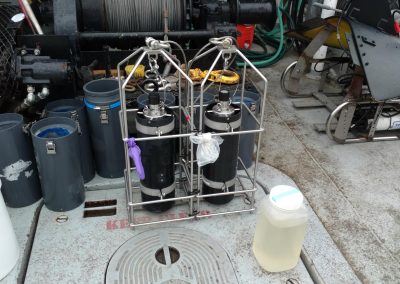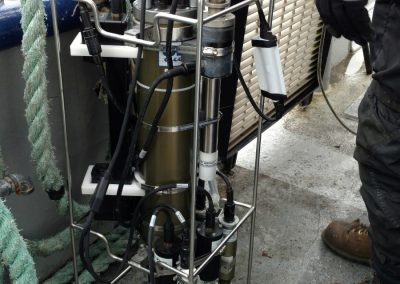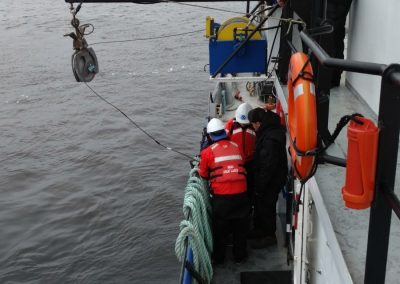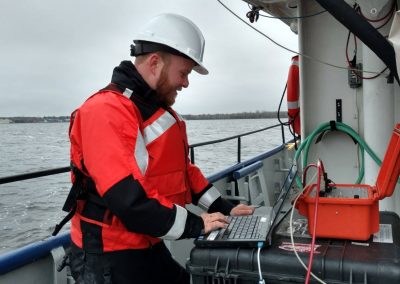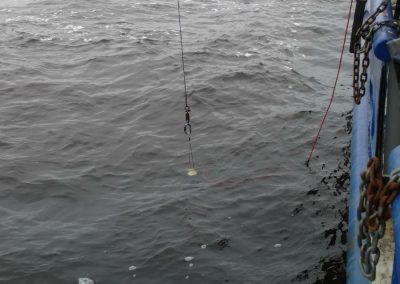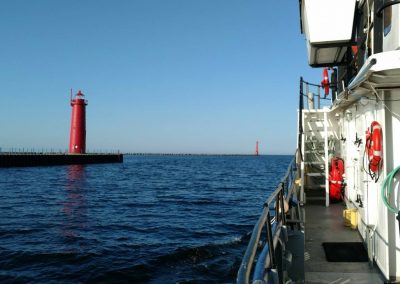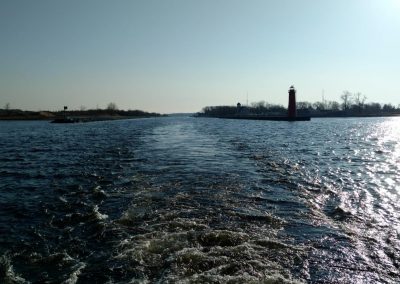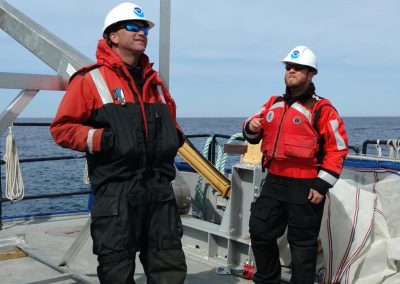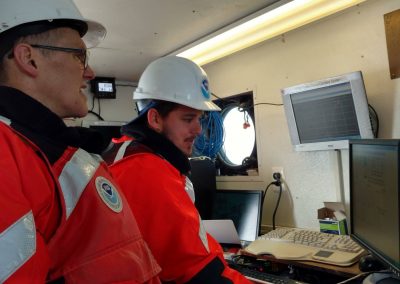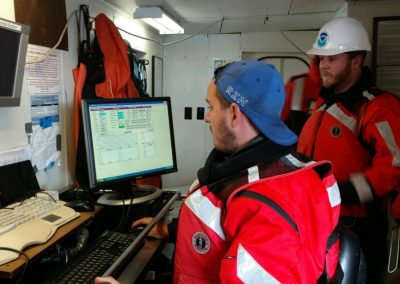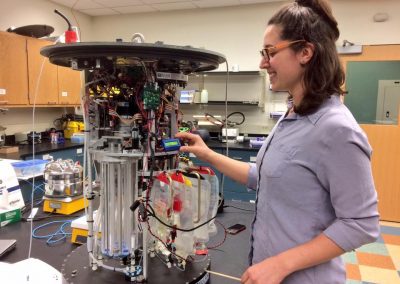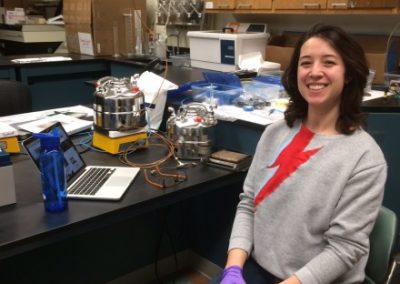Spring 2017 eNewsletter
Featured Research: Ready, Set, Science! Summer Research on the Great Lakes
With summer just around the corner, CIGLR research scientists and staff have had a busy spring preparing for the summer field season. From cleaning and testing equipment to checking safety gear, this preparation time is critical for successful summer research. We hope you enjoy this Great Lakes research photodocumentary.
Muskegon Lake and Lake Michigan
1
CIGLR’s Paul Glyshaw and David Wells collecting water aboard the R/V Laurentian on Muskegon Lake using a Niskin bottle. The team was testing and preparing equipment for the summer field season. A Niskin bottle allows researchers to take water samples from discreet locations within the lake’s water column.
2
CIGLR’s Paul Glyshaw and David Wells collecting water aboard the R/V Laurentian on Muskegon Lake using a Niskin bottle. The Niskin bottle sample was emptied into a plastic bottle for transport back to the laboratory.
3
Equipment such as these fluoroprobes was also tested and calibrated in Muskegon Lake. Fluoroprobes are used for estimating chlorophyll concentrations from the surrounding water.
4
Another instrument that is very important for our Great Lakes research cruises is the CTD instrument. The CTD’s sensors take measurements throughout the water column that include Conductivity (dissolved salts and other materials), Temperature, and Depth (thus, the name CTD). This picture is showing a CTD being deployed in Muskegon Lake.
6
CIGLR’s Paul Glyshaw is pictured here testing the UV Radiometer. The UV Radiometer measures the intensity of UV light through the water column.
7
The UV Radiometer is deployed and taking measurements of light intensity through the water column of Muskegon Lake.
8
After several days in Muskegon Lake testing and calibrating equipment the R/V Laurentian crew heads out to Lake Michigan to collect more samples.
9
The R/V Laurentian crew captured this beautiful picture of the Muskegon lighthouse on their way out of the channel to deep water.
10
With the Muskegon lighthouse in the distance, the R/V Laurentian crew begins preparing for sample collection and instrument testing.
Lake Huron
1
CIGLR’s Paul Glyshaw and David Wells on Lake Huron aboard the 26′ boat ‘Cyclops.’ They have just pulled the neuston net through the water, which samples larval fish and other small organisms near the water surface. Samples were collected for processing back at the laboratory.
2
CIGLR’s Paul Glyshaw and Deckhand Todd Roetman are prepped and ready for additional sampling in Saginaw Bay, Lake Huron.
3
Another instrument that samples the water column is the MOCNESS (Multiple Opening/Closing Net and Environmental Sensing System). The MOCNESS is a net system used for plankton collection. Pictured: Todd Roetman (Deckhand), Ed Rutherford (GLERL), David Wells (CIGLR), Paul Glyshaw (CIGLR), and Doran Mason (GLERL).
4
Ed Rutherford (GLERL) and David Wells (CIGLR) controlling the MOCNESS. As the MOCNESS tows behind a research ship, each net can be opened and shut independently so that it samples a distinct patch of water. The researcher can then choose exactly when to open and shut the net by using the environmental sensing system. This is an array of sensors mounted on the instrument frame that relays water conditions up to the ship in real time.
6
CIGLR Summer Fellow, Angelika Kurthen, gets acquainted with scientific sampling from a research vessel.
8
CIGLR’s Paul Glyshaw and David Wells process samples collected from Lake Huron for nutrients, larval fish, and zooplankton. These data will be incorporated into a large database and used to compare foodweb dynamics between Great Lakes ecosystems.
Environmental Sample Processor, ESPniagara
1
The Environmental Sample Processor, ESPniagara is a “lab-in-a-can.” The ESP collects water samples and analyzes them for algal toxins, namely microcystin, the dominant algal toxin in western Lake Erie. Our goal in using this instrument is to provide drinking water managers with data on algal toxicity in near real-time before the water reaches municipal water intakes, enabling managers to take steps to protect public health sooner.
2
CIGLR’s ESP Technician, Emily Davenport, performing maintenance on the ESP. It will be the second year for the ESP in Lake Erie. It is expected to be deployed in July.



